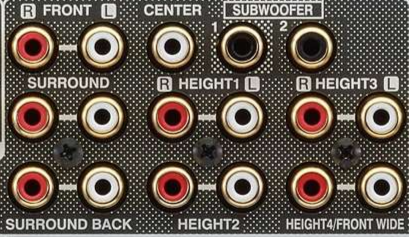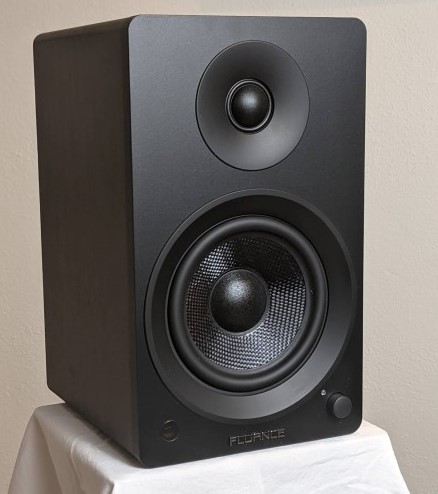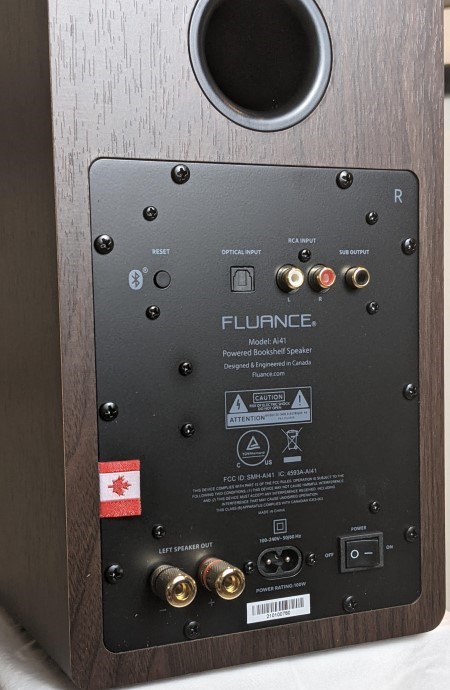Mixing Active and Passive Speakers in a Home Theater – How and What You’ll Need
There are a lot of reasons you might have active speakers. They may have come from a computer desktop system, some active monitors, or maybe some of the high-end ones sold by KEF. Regardless, you want to use them in your home theater. You quickly discover that home theater receivers expect to power passive speakers, not connect to active ones. But is it possible? Can you mix active and passive speakers in your home theater? The answer is yes…but you’ll need a few things. Let’s discuss.
Check Your AV Receiver
Your first step in the process of mixing active and passive speakers in your home theater is to check your receiver. The easiest way is to look up online an image of the back panel. You are looking for pre-outs. Pre-outs are RCA connections that allow the AV receiver to send the sound information to an external amplifier. In your case, your active speakers have their own amplifiers. If your AV receiver doesn’t have pre-outs, you can’t connect it to an active speaker.

But, wait! You’ve searched online and found a speaker-level to line-level converter! Couldn’t you just buy a couple of those and plug them into your speaker outputs on your AV receiver so that you can turn that amplified signal into one that your active speakers could use? The answer is maybe. Most of those converters are designed for automotive use for adding external amps. They are not designed for the types of power that an AV receiver can put out. You could try it, but you’ll want to ensure that the converter can handle the power. If you are not sure (because it doesn’t say), don’t chance it.
Measure for Cable
If you have the requisite pre-outs, it is time to start measuring for cable. Your idea was probably to save some money in your home theater by mixing the passive and active speakers you already own. The problem that you probably didn’t anticipate was the cost and size of the cable. While speaker cable is relatively inexpensive (especially if you follow our guide), RCA cables are not.
In fact, there are a lot of things that RCA cables are not. Speaker cables can be cut to size. Not so with RCA cables (if you don’t have fairly expensive terminating equipment). Speaker cables are relatively small and thin while RCA cables are much thicker and harder to hide. Chances are, if you are running RCA cables to a surround or rear speaker, you’re going to have a lot of extra wire spooled on the ground. You can buy 100 feet of speaker wire and wire up most of your theater for nearly the same price as a 50-foot RCA cable for one speaker.

If you want to run a single cable to your speaker, look for a subwoofer cable. These are nearly always well-shielded. You can also buy traditional RCA cables (which come in pairs that are connected) and often just pull them apart. Just inspect the jacket afterward for damage. Monoprice is our favorite retailer for quality but inexpensive RCA cables (and speaker cables for that matter). Just remember to budget for extra wire as it is better to be too long than too short.
Lastly, it is worth mentioning that many pairs of active speakers use an amp in one speaker to power the pair. A traditional speaker wire connection is needed between the two. Make sure you plan your wiring accordingly.
Setting Up Your Active Speakers
The first step is to connect both the RCA and power cables to your active speaker. While your passive speakers need only the speaker wire from your home theater receiver for both power and signal, the active speakers will need the RCA from the receiver for the signal and power from the wall for…power.


When mixing active and passive speakers in a home theater, one of the main concerns is volume. With passive speakers, you let the AV receiver handle the volume. Active speakers have their own volume knob. Here is where we won’t be able to give you absolute advice. You should be able to turn the volume knob on the speaker as loud as it will go and never touch it again. Unfortunately, many of the amps that are mated with active speakers don’t really expect to ever be turned all the way up. The speaker will start to distort (because the amplifier is clipping) or it will start to hiss audibly. Regardless, you want to volume knob to be turned up as high as it can go without distortion or other audio problems. It’ll take some trial and error on your part.
Run Your Room Correction
Your room correction program on your AV receiver is going to help you dial in your active speakers. Yes, your room correction will help you even out the audio in your room. But it can also tell you if your active speakers are mixing well with your passive ones in your home theater. How? Check out the trim levels after the initial setup. Are they at the extremes (usually + or – 10-12dB)? Then your active speakers are too loud (-10-12dB) or too soft (+10-12dB). If they are too soft, then you’ll need to either turn up the volume knob on the active speakers or move them closer to your listening position. If they are too loud, you simply turn them down. Either way, you want them closer to a 0dB trim level if possible. Run your room correction again to verify.
Once you have the levels of your active speakers within the proper range, NEVER TOUCH THOSE VOLUME KNOBS AGAIN! Any change to the volume knob settings on any one of your active speakers in your home theater can knock them out of sync with your passive speakers. And the other active speakers for that matter. This is why we rarely recommend using active speakers in a home theater. We suggest you mark the knobs in a way that will allow you to easily verify their levels. You don’t want to go through this process again!
Wrap Up
Can you mix and match active and passive speakers in a home theater? Absolutely! Should you? Well, that’s really up to you. There are some cost savings (especially if you already have the speakers on hand) but there are some extra costs as well. Plus, setup is a bit of a hassle and you run the risk of the internal amps not having the fidelity of power of those connected with your AV receiver.
Have you used active speakers in your home theater? How did it work out? Let us know in the comments!


